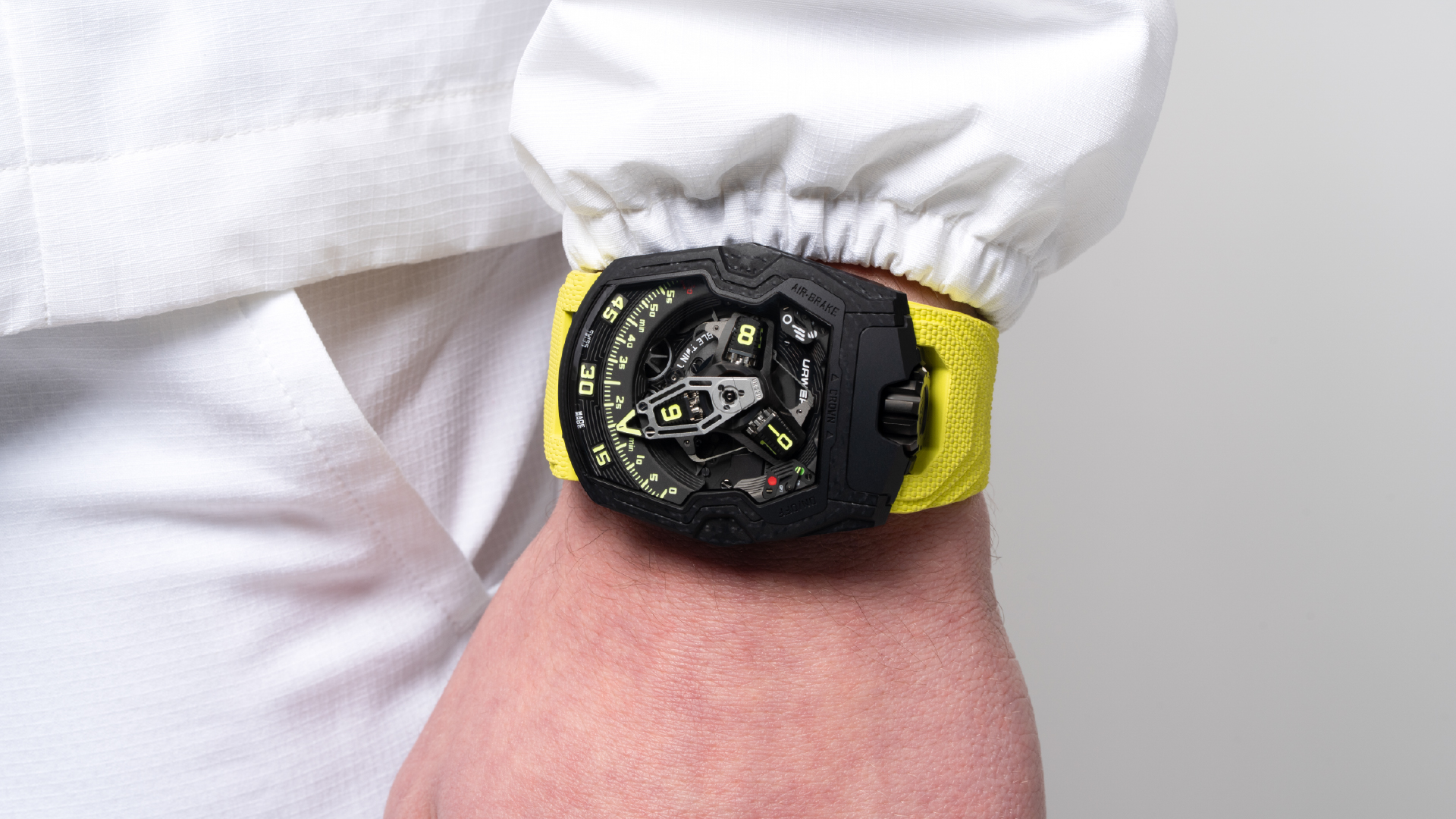Join CHRONOHOLIC today!
All the watch news, reviews, videos you want, brought to you from fellow collectors
All the watch news, reviews, videos you want, brought to you from fellow collectors
.jpg)


In 2015, H. Moser & Cie. introduced its celebrated Pioneer collection that combined elegance with the practicality and robustness of a sports watch. The brand has now expanded that collection with a satellite time display, which first appeared in 2018 in its other iconic line, the Endeavour—introducing the Pioneer Flying Hours.
.jpg)
Two models mark the launch. The first is housed in a 42.8 mm case crafted in 5N red gold with black DLC-coated titanium inserts, paired with a deep aventurine dial that evokes a starry night sky. The second is crafted in stainless steel paired with a white fumé dial with a sunburst finish. Significant to H. Moser & Cie., both dials remain logo-free, keeping the focus on the display’s complexity. On the dial, three satellite discs orbit around a skeletonised central minutes disc. At the precise turn of the hour, a numeral jumps sharply into position, visible in the hour aperture.
Both timepieces measure differently in terms of thickness—the gold-and-titanium model measures 16.1 mm, while the steel edition is slimmer at 14.2 mm. The watches are water-resistant to about 120 metres.
.jpg)
Driving the mechanism is the in-house automatic calibre HMC 240, adapted specifically for the instantaneous jump system. The movement features a Straumann hairspring with a flat overcoil and a bi-directional winding system. Depending on the model, it is equipped with either a solid red gold rotor (gold-and-titanium edition) or a tungsten rotor (steel edition). It runs at a frequency of 3 Hz and delivers about 72 hours of autonomy.
Each version is paired with a textured rubber strap. The red gold and titanium edition is flanked with a black strap secured with a DLC titanium pin buckle, while the steel edition comes with a grey strap and steel buckle.
.jpg)
The Pioneer Flying Hours in red gold and titanium with aventurine dial (Ref. 3240-0900) is limited to 100 pieces and priced at approx. INR 43,10,000. The stainless-steel model with white fumé dial (Ref. 3240-1200) joins the permanent collection at approx. INR 32,05,000.


In 2015, H. Moser & Cie. introduced its celebrated Pioneer collection that combined elegance with the practicality and robustness of a sports watch. The brand has now expanded that collection with a satellite time display, which first appeared in 2018 in its other iconic line, the Endeavour—introducing the Pioneer Flying Hours.
.jpg)
Two models mark the launch. The first is housed in a 42.8 mm case crafted in 5N red gold with black DLC-coated titanium inserts, paired with a deep aventurine dial that evokes a starry night sky. The second is crafted in stainless steel paired with a white fumé dial with a sunburst finish. Significant to H. Moser & Cie., both dials remain logo-free, keeping the focus on the display’s complexity. On the dial, three satellite discs orbit around a skeletonised central minutes disc. At the precise turn of the hour, a numeral jumps sharply into position, visible in the hour aperture.
Both timepieces measure differently in terms of thickness—the gold-and-titanium model measures 16.1 mm, while the steel edition is slimmer at 14.2 mm. The watches are water-resistant to about 120 metres.
.jpg)
Driving the mechanism is the in-house automatic calibre HMC 240, adapted specifically for the instantaneous jump system. The movement features a Straumann hairspring with a flat overcoil and a bi-directional winding system. Depending on the model, it is equipped with either a solid red gold rotor (gold-and-titanium edition) or a tungsten rotor (steel edition). It runs at a frequency of 3 Hz and delivers about 72 hours of autonomy.
Each version is paired with a textured rubber strap. The red gold and titanium edition is flanked with a black strap secured with a DLC titanium pin buckle, while the steel edition comes with a grey strap and steel buckle.
.jpg)
The Pioneer Flying Hours in red gold and titanium with aventurine dial (Ref. 3240-0900) is limited to 100 pieces and priced at approx. INR 43,10,000. The stainless-steel model with white fumé dial (Ref. 3240-1200) joins the permanent collection at approx. INR 32,05,000.








